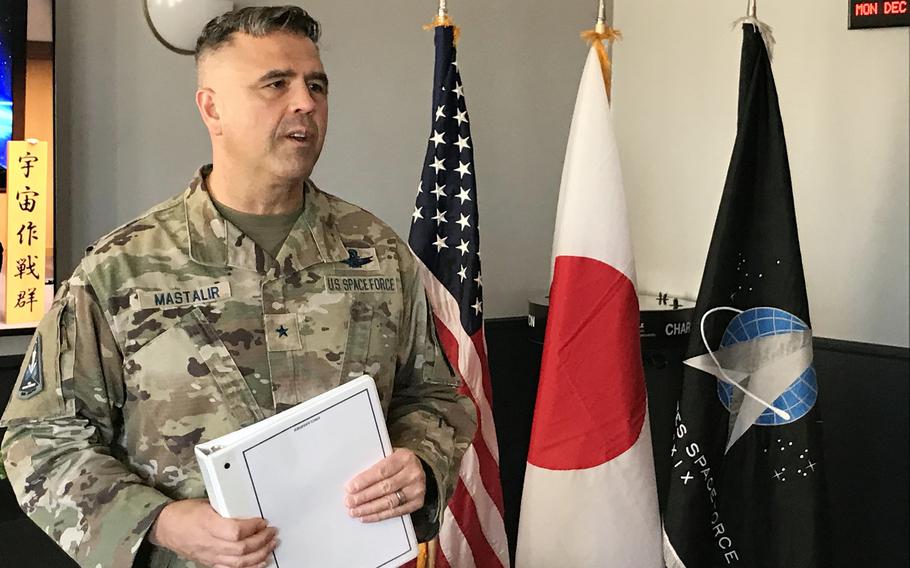
The commander of U.S. Space Forces Indo-Pacific, Brig. Gen. Anthony Mastalir, speaks with reporters at Yokota Air Base, Japan, Dec. 3, 2024. (Seth Robson/Stars and Stripes)
YOKOTA AIR BASE, Japan — The Space Force is standing up a new unit at this airlift hub in western Tokyo to address growing threats from China, Russia and North Korea, according to the service’s regional commander.
The activation of U.S. Space Forces Japan on Wednesday will mark “a pivotal moment in space operations within the Indo-Pacific region,” Brig. Gen. Anthony Mastalir, head of the Hawaii-based U.S. Space Forces Indo-Pacific, told reporters Tuesday at Yokota.
The unit will be composed of tens, not hundreds, of guardians, though Mastalir declined to provide a precise number.
Created in December 2019 under President Donald Trump, the Space Force now has more than 14,000 personnel. Its missions include tracking threats to the U.S. homeland and safeguarding American satellites.
“Space is becoming increasingly congested, contested and critical to national security,” Mastalir said. “This activation is a critical step in enhancing the integration and coordination of space capabilities with Japan.”
The Japan Air Self-Defense Force — soon to be rechristened the Japan Air and Space Self-Defense Force, according to Mastalir — established its own space operations unit at nearby Fuchu Air Base in May 2020.
The U.S. activation comes amid a broader Pentagon initiative announced in July to restructure U.S. Forces Japan into a joint force headquarters, facilitating closer collaboration with the Japanese Self-Defense Forces.
The Yokota-based Space Force unit will be well postured to support a reorganized USFJ, Mastalir told reporters.
“Both the U.S. and Japan use space to project power and, likewise, our adversaries in this region are using space more than ever to project power,” he said.
China, Russia and North Korea pose significant challenges in the region, Mastalir said. Pyongyang test-fired an intercontinental ballistic missile on Oct. 31 and has sent troops to support Russia’s invasion of Ukraine.
China has rapidly expanded its military space capabilities over the past decade, including anti-satellite weapons like grappler arms and high-orbit missiles, Mastalir added. He described Beijing’s efforts as part of a larger strategy to establish a long-range kill chain designed to deter U.S. military operations in the region.
“China’s A2/AD (anti-access/area denial) is concentrated around Taiwan and the South China Sea, putting U.S. military forces — such as a carrier strike group — and installations in the region within range of precision-guided cruise and ballistic missiles,” the Virginia-based Missile Defense Advocacy Alliance states on its website.
China has deployed an increasing number of satellites to find and target U.S. and allied warplanes and warships, Mastalir said, adding that the Space Force’s mission includes establishing space superiority to protect against space-enabled attacks.